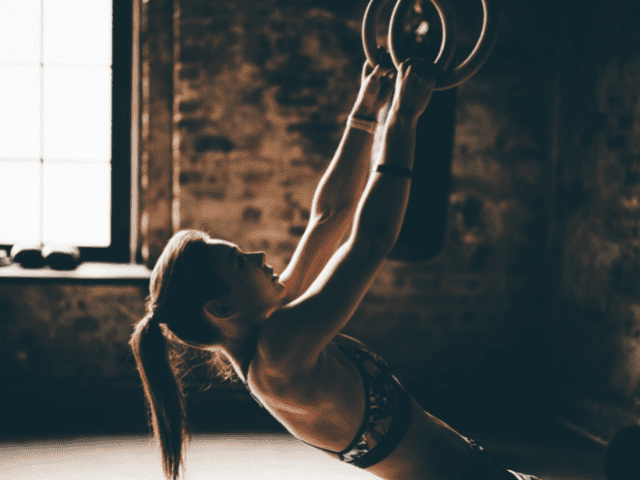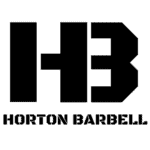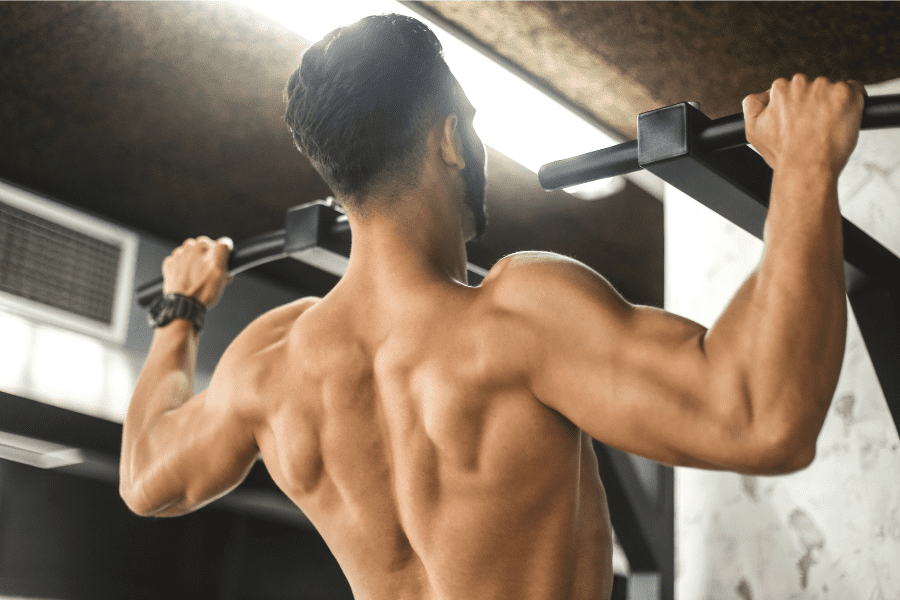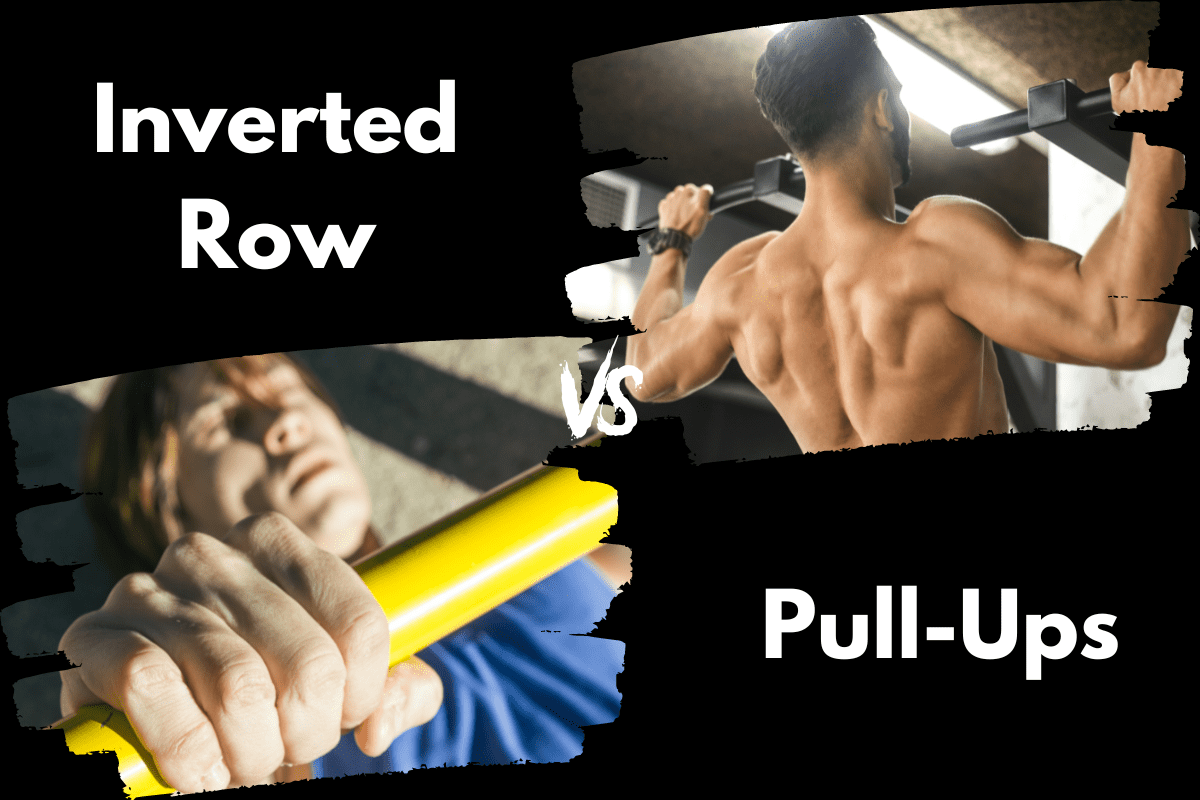Inverted Rows vs Pull-ups (Which is Better?)
Inverted Rows and Pull-Ups are two similar but distinct exercises that target the muscles in the upper back and arms. Both exercises involve pulling the body up towards an overhead bar, but the key difference is the position of the body relative to the bar.
Inverted Rows are performed with the body lying horizontally underneath the bar, while Pull-Ups are performed with the body hanging vertically beneath the bar.
Both exercises can be effective for building strength and improving hypertrophy, but is one exercise better than the other?
In this article, I’m going to go over how to do each exercise and then compare how they stack up against one another depending on an individual’s specific goals.
This article contains affiliate links. If you buy something using these links I may earn a commission. Thanks.
Inverted Rows

Equipment Needed
- Barbell*
- Squat Rack
*I generally do Inverted Rows with a barbell in a rack, but if you have rings they work great as well.
Step-by-Step Instructions
- Start by placing a bar on the rack about waist height.
- The higher the bar is placed, the easier the rows will be. The lower the bar is placed, the harder the rows will be. (Just make sure to leave yourself enough room to fully extend your arms at the bottom of the rep)
- Set the bar on either the J-Hooks or the Safety Bars
- Lay down underneath the bar.
- Grab the bar with an overhand grip, brace the core and make sure your body is fully extended – including your legs.
- You should be positioned to where when you pull yourself up towards the bar, the bar touches the same spot on the chest as it would for bench press. Slide up or down to adjust accordingly.
- Now, keeping your body in a straight line, pull your chest up to the bar and lower back down until your arms are fully extended.
- Repeat until all reps are completed.
Coaching Points
There are two common mistakes that I see all the time when it comes to Inverted Rows.
One, athletes I coach love to either pull their face to the bar or even raise their chin up and over the bar like a pull-up. These are both wrong.
You should think of the Inverted Row like a reverse bench press. Keep your head back, chest out and pull your chest directly to the bar. Pull the shoulder blades down and back at the top of the rep and squeeze the back.
The second mistake I see all too often is tired athletes that start to look like they’re doing the worm. They start rocking and rolling their entire body to try to get their chest up to the bar. Don’t do this! Maintain a rigid body posture and continue pulling yourself as high as you can each rep.
Inverted Rows are sometimes referred to as Inverted Pull-ups and/or my personal favorite, Aussie Pull-ups. If you see one of those names in a program or workout, they are most likely referring to the same exercise.
Related –> 13 Alternatives and Variations For Inverted Rows to Build a Strong Back

Tired of coming up with your own workouts? But don’t want to pay an arm and a leg?
I post workouts 5 days a week right here. (Did I mention they’re free?)
Pull-Ups

Equipment Needed
- Pull Up Bar (Either as part of a rack or a wall-mounted bar)
- Dip Belt with Chain (For weighted variations)
- For modification purposes:
- Lifting Band (To assist in completing the pull-up or doing more repetitions with full range of motion).
- Lifting partner (To assist in getting your chin over the bar)
- Bench (To help reach the bar if it’s too high)
Step-by-Step Instruction
- Approach the pull-up bar and grab the bar with a pronated grip (palms facing away).
- Use a bench to get to the bar if it is too high.
- Later in the article, I will talk about variations, alternatives, and modifications where the supinated (palms facing in) grip will be discussed.
- Squeeze the bar and engage the core muscles and do not cross your legs.
- Engage the upper back and pull up until your chin is over the bar.
- Pause for 1 second with your chin over the bar.
- Slowly lower yourself back to the starting position.
Coaching Points
Take your time and master the Pull-Up. The benefits of doing sound pull-ups will pay dividends for your shoulder health and the potential to maximize your upper body strength.
I would highly recommend this movement to any lifter or athlete. It provides all the benefits of an upper-body pulling movement with little to no risk.
Common Mistakes
By far the biggest mistake I see in the pull-up is lifters not using a full range of motion. Hang all the way down and maintain great tension through the shoulders and abdomen (DO NOT JUST HANG IN THE BOTTOM). Pull all the way up and do not whip your head so that your chin barely makes it over the bar.
Inverted Rows vs Pull-ups: Which is Better?
Now, let’s compare how these two exercises stack up depending on specific goals.
Better For Developing Strength: Pull-ups
This one is pretty close, but I’m going to give the edge to Pull-ups. Pull-ups involve lifting the entire weight of your body versus only a percentage of your bodyweight for Inverted Rows.
True, you can add resistance to Inverted Rows to make them more challenging, but the same can be done for Pull-ups as well.
Ultimately, I believe both are great for gaining strength (especially for beginners), but Pull-ups are just a little better.
Better For Beginners: Inverted Rows
Many beginners really struggle with Pull-ups early on in their training. Inverted Rows though can be modified to be extremely beginner-friendly.
If you bend your knees and place your feet flat on the floor, Inverted Rows become easy enough for almost all lifters. As strength increases, you can continue to modify Inverted Rows to continue to make them challenging.
To drive home the point, I will often give beginners the option to do Inverted Rows instead of Pull-ups to begin to build a baseline of strength and gain confidence.

Get Shredded… For Free
Get a free workout Monday through Friday, posted right here on Horton Barbell. These workouts are designed to help you get strong, in shape and look great at the beach!
Final Thoughts
I’ve just spent an entire article comparing which is better – Inverted Rows or Pull-ups. However, the truth is, there is no reason you shouldn’t have both exercises in your strength training program.
Both are excellent exercises for building upper-body strength and hypertrophy. They also complement each other very well – Inverted Rows are a horizontal rowing movement and Pull-ups are a vertical pulling movement.
Incorporating both into your training program can also add much-needed variety and keep your plan from getting stale.
So, my suggestion would be instead of trying to decide between the two exercises, figure out how you can utilize both Inverted Rows and Pull-ups in your training plan.
More Links and Info
Check out how Inverted Rows compare to some other popular back exercises:

